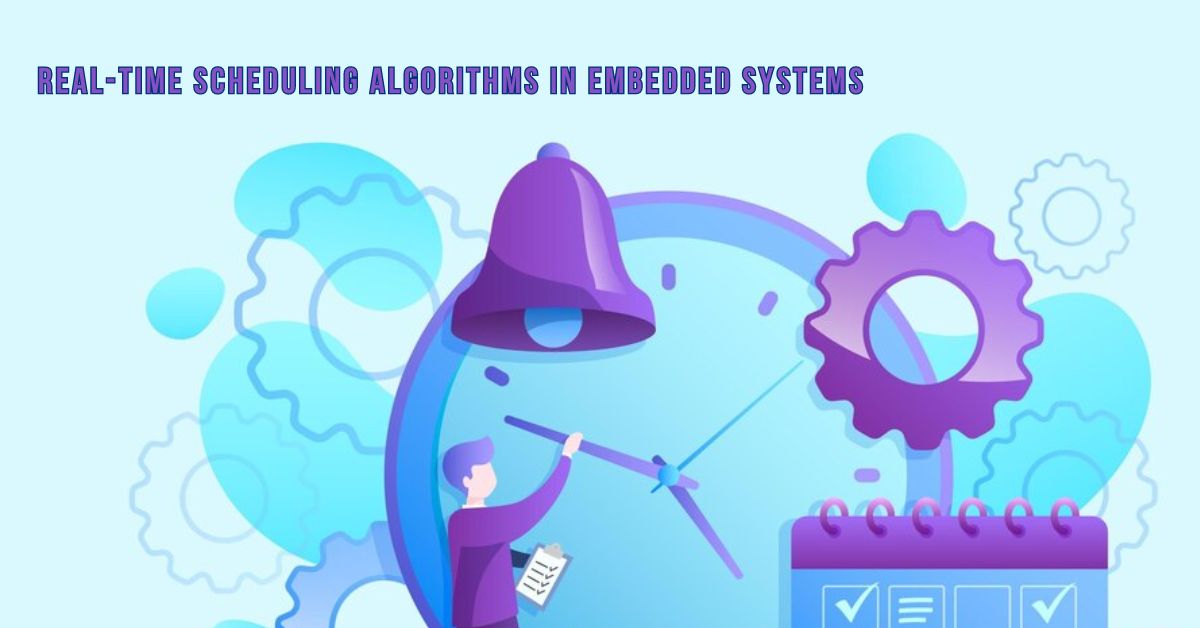
Real-Time Scheduling Algorithms in Embedded Systems
Embedded systems are ubiquitous in our world, silently running behind the scenes in everything from self-driving cars and industrial robots to medical devices and smart appliances. Unlike traditional computers, embedded systems have strict real-time constraints. This means tasks within the system need to be executed within a specific time frame to ensure proper functionality. Missing a deadline in a real-time system can have severe consequences, potentially leading to system failure or even safety hazards.
The heart of ensuring timely task execution lies in the scheduling algorithm. This software component determines the order and timing of tasks on the processor, ensuring critical deadlines are met. Choosing the right scheduling algorithm is crucial for the design and development of reliable embedded systems. Embedded software development services can provide expertise in selecting and implementing appropriate scheduling algorithms, ensuring real-time performance requirements are achieved.
Here, we delve into the world of real-time scheduling algorithms, exploring some of the most common approaches and their strengths and weaknesses:
-
Earliest Deadline First (EDF):
EDF is a dynamic, preemptive scheduling algorithm. It prioritizes tasks based on their deadlines. The task with the earliest deadline is assigned the highest priority and gets executed first. This ensures that the most critical tasks are completed on time.
Advantages:
- Optimal for schedulability: EDF is provably optimal for scheduling a set of independent periodic tasks if the total CPU utilization is less than 100%. This means if tasks can be guaranteed to meet their deadlines under EDF, they can’t be guaranteed under any other algorithm.
- Focuses on meeting deadlines: EDF prioritizes tasks solely based on deadlines, ensuring the most critical tasks are processed first.
Disadvantages:
- High overhead: EDF constantly re-evaluates priorities as deadlines approach, leading to potentially high context switching overhead.
- Not suitable for all tasks: EDF may not be ideal for tasks with complex dependencies or aperiodic tasks (tasks that don’t have a fixed repetition period).
-
Rate Monotonic Scheduling (RMS):
RMS is a static, fixed-priority scheduling algorithm. Priorities are assigned to tasks based on their periods (the time between task executions). Tasks with shorter periods (executing more frequently) receive higher priorities. This approach ensures a predictable and deterministic scheduling behavior.
Advantages:
- Simple to implement: RMS is easier to implement than EDF due to its static priorities.
- Deterministic behavior: The predictability of task execution allows for easier analysis of worst-case scenarios.
Disadvantages:
- Not optimal for all workloads: RMS may not be ideal for scenarios where deadlines are not directly tied to task periods.
- Priority inversion: Lower priority tasks holding resources can block higher priority tasks, potentially causing deadline misses.
-
Least Laxity First (LLF):
LLF is another dynamic, preemptive scheduling algorithm. It prioritizes tasks based on their laxity, which is the difference between a task’s deadline and its remaining execution time. The task with the least laxity (closest to missing its deadline) is assigned the highest priority.
Advantages:
- Focuses on meeting deadlines: Similar to EDF, LLF prioritizes tasks based on their urgency to meet deadlines.
- Reduces context switching: Compared to EDF, LLF may lead to less frequent context switching due to its consideration of remaining execution time.
Disadvantages:
- Increased complexity: Calculating laxity for each task adds complexity compared to simpler priority schemes.
- Not always optimal: LLF is not provably optimal for schedulability like EDF.
Choosing the Right Algorithm:
The choice of scheduling algorithm depends on the specific needs of the embedded system. Here are some factors to consider:
- Type of tasks: Are the tasks periodic, aperiodic, or a mix of both?
- Deadline criticality: How important is it to strictly meet deadlines for each task?
- System complexity: How much overhead can the system tolerate from context switching?
Beyond the Basics:
The world of real-time scheduling algorithms extends beyond these core concepts. Fixed-priority scheduling with techniques to address priority inversion, scheduling for multiprocessor systems, and algorithms for handling resource sharing are all important areas of study. Embedded Linux development services can leverage these advanced scheduling techniques to create custom Linux kernels optimized for real-time performance in resource-constrained embedded systems.
Conclusion:
Real-time scheduling algorithms play a vital role in ensuring the proper functioning of embedded systems. By understanding the strengths and weaknesses of different approaches, developers can make informed decisions to meet the specific timing constraints of their applications. As embedded systems continue to evolve, research in real-time scheduling algorithms will be crucial for designing reliable and efficient systems for the future.


